This content is also available in:
English
Español
Magyar
Polski
Türkçe
V hodnocení je t?eba popsat n?kolik znak?
typ bun?k (jako nap?.thyrocyty, makrofágy, lymfocyty)
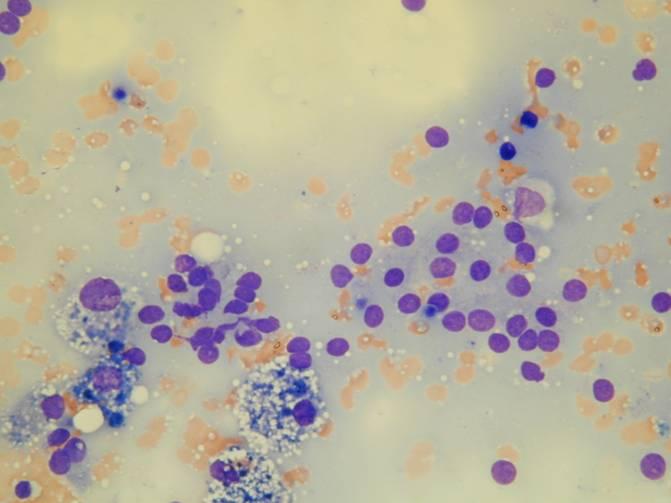
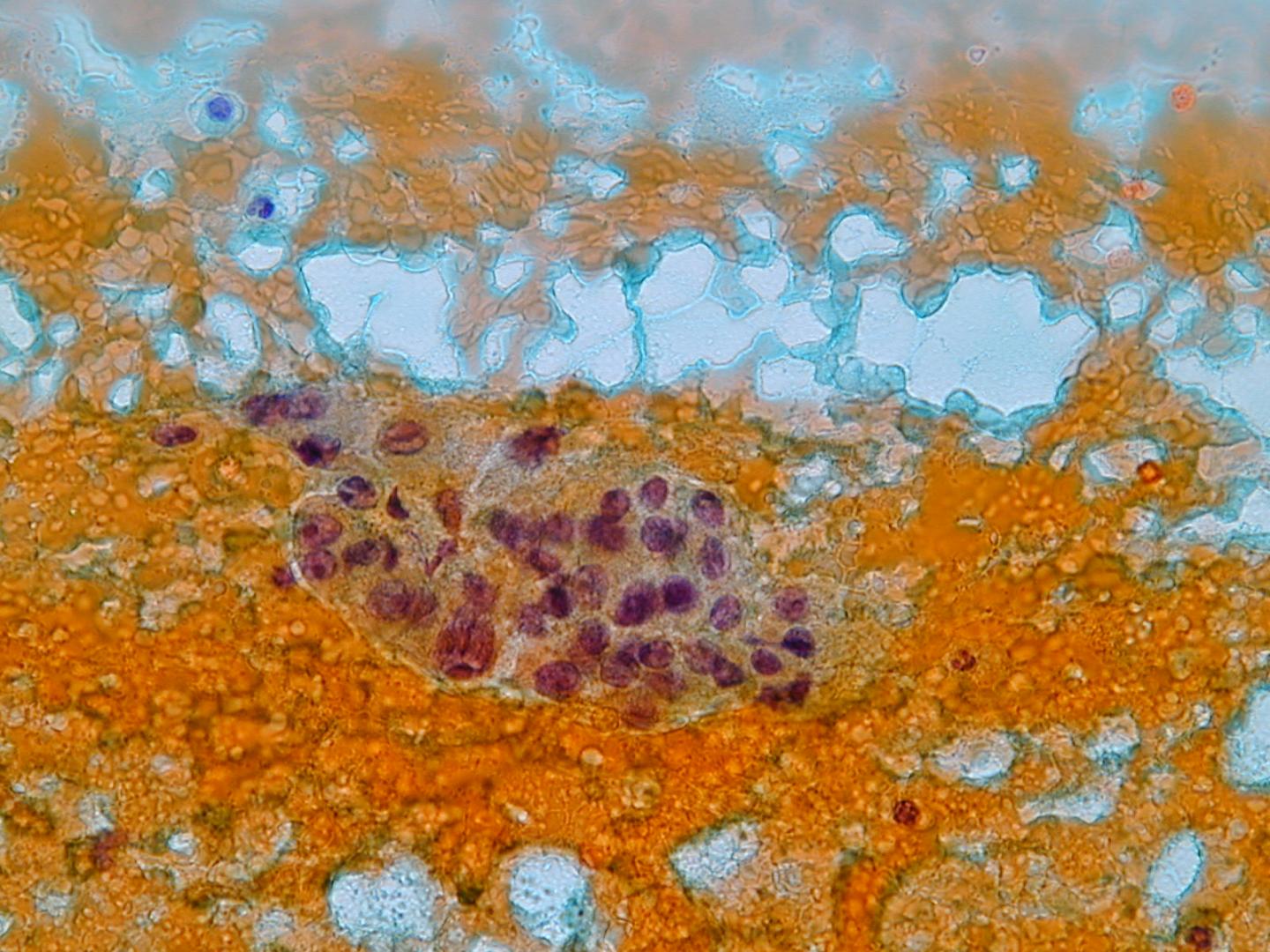
množství a kvalitu koloidu (chudý-hojný, ?ídký-denzní)

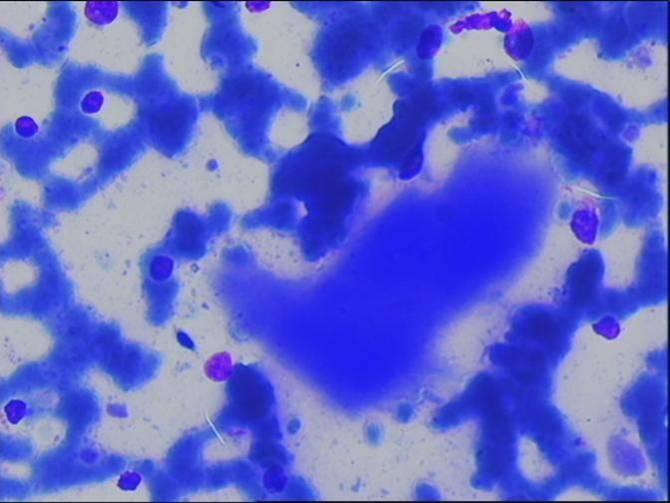
celularita (nízká, st?ední, vysoká)
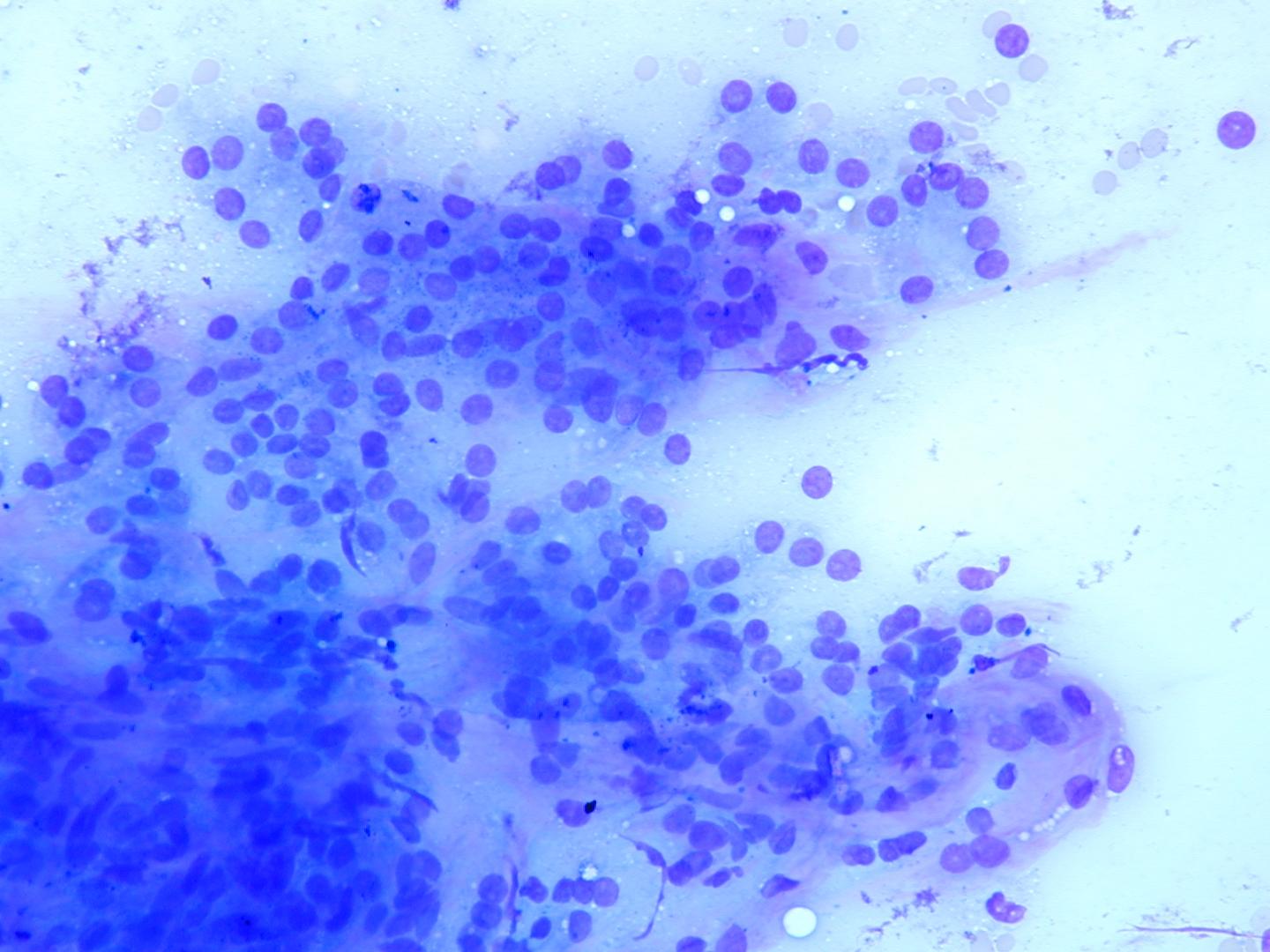

architektura (jednovrstevné formace, nat?snané trsy, plachty, makro/mikrofolikuly, papilární útržky, izolované bu?ky)
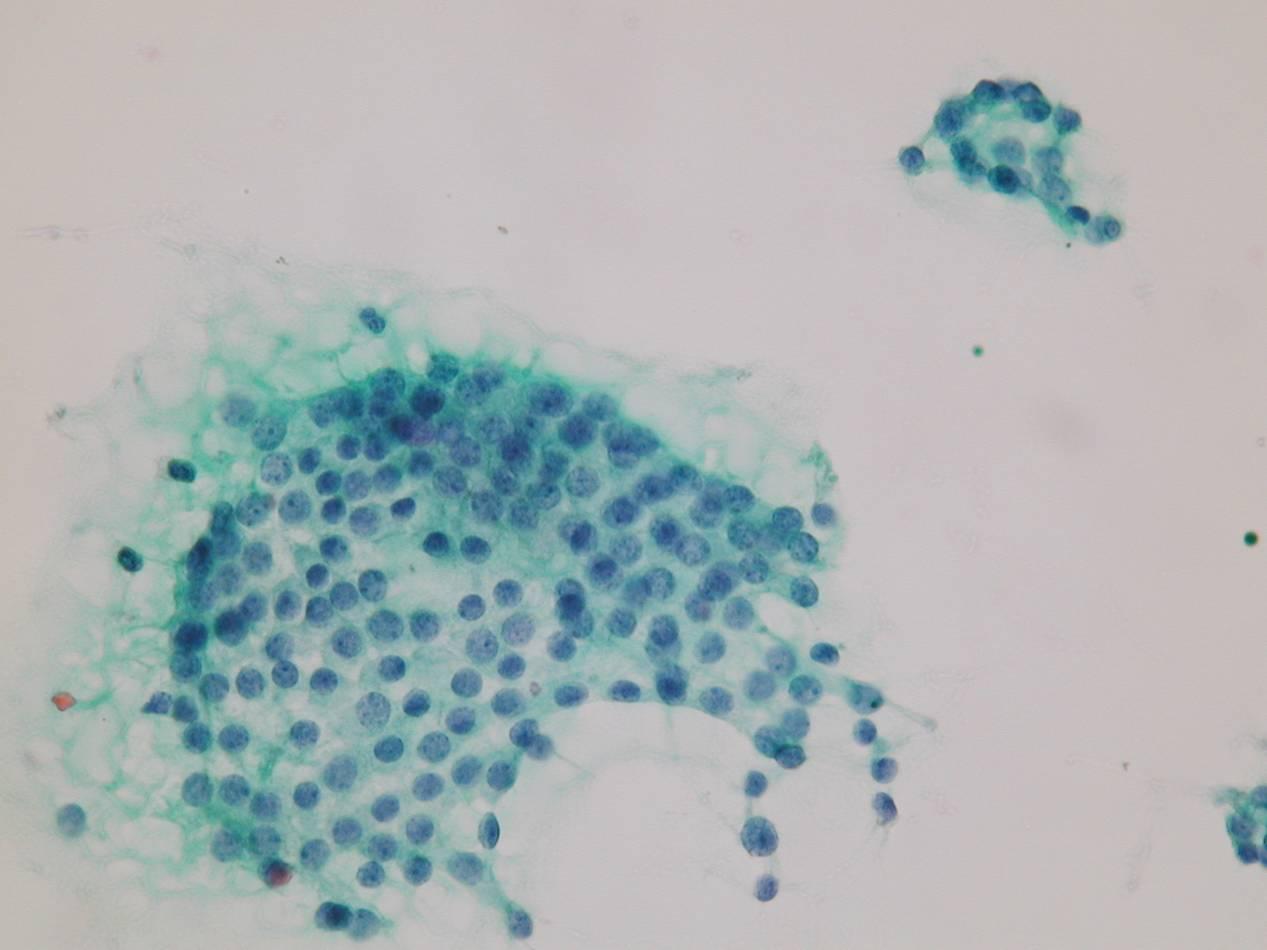

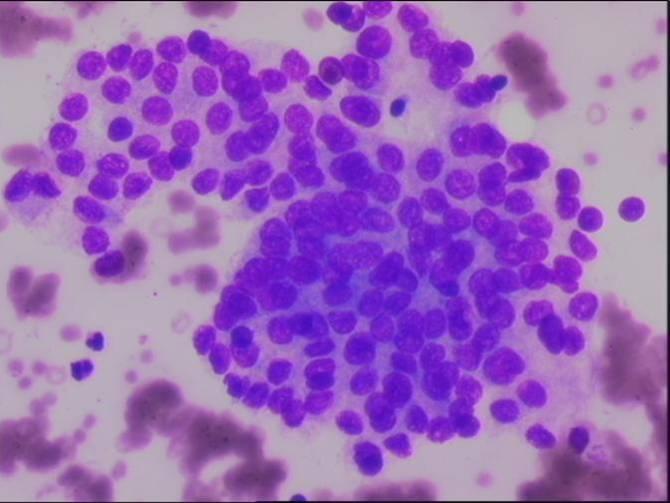

p?ítomnost holých jader

Cytologické rysy (cytoplazma, jádra)
V nádorových uzlech jsou vzorky zpravidla vysoce bun??né. Plošné formace jsou b?žné v hyperplastické strum? a makrofolikulárních adenomech, mohou však být p?ítomny i v karcinomech. Makrofolikuly jsou obvykle sou?ástí polynodózní strumy a makrofolikulárních adenom?. P?evaha mikrofolikul? indikuje folikulární neoplázii. Papilární trsy s bu?kami na povrchu fibrovaskulární složky jsou charakteristické pro papilární karcinom. Nát?ry s p?evahou koloidu oproti folikulárním bu?kám indikují benigní uzel.
Cytologické rysy:
- cytoplazma (množství, barvitelnost)
- struktura chromatinu
- jaderná membrána (hladká nebo nepravidelná)
- jaderné rýhy a pseudoinkluze



